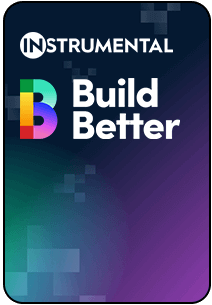-
NPI: A How To Guide for Engineers & Their Leaders
-
Leading from the Front
-
Building the Team
-
Screws & Glue: Getting Stuff Done
-
Choosing the best CAD software for product design
-
Screws vs Glues in Design, Assembly, & Repair
-
Best Practices for Glue in Electronics
-
A Practical Guide to Magnets
-
Inspection 101: Measurements
-
OK2Fly Checklists
-
Developing Your Reliability Test Suite
-
Guide to DOEs (Design of Experiments)
-
Ten Chinese phrases for your next build
-
-
NPI Processes & Workflows
-
-
Production: A Primer for Operations, Quality, & Their Leaders
-
Behind the Pins: How We Built a Smarter Way to Inspect Connectors
-
Former Apple Executive Bryan Roos on Leading Teams in China and Managing Up
-
Responding to Rare-Earth Supply Chain Risks: A Quick Guide for Manufacturers
-
Leading for Scale
-
Navigating Factory Moves and Scaling Production in an Era of Uncertainty with PRG's Wayne Miller
-
Steven Nickel on How Google Designs for Repair
-
Petcube’s Alex Neskin Embraces Imperfection to Deliver Innovation
-
Proven Strategies for Collaborating with Contract Manufacturers
-
Greg Reichow’s Manufacturing Process Performance Quadrants
-
8D Problem Solving: Sam Bowen Describes the Power of Stopping
-
Cut Costs by Getting Your Engineers in the Field
-
Garrett Bastable on Building Your Own Factory
-
Oracle Supply Chain Leader Mitigates Risk with Better Relationships
-
Brendan Green on Working with Manufacturers
-
Surviving Disaster: A Lesson in Quality from Marcy Alstott
-
-
Ship It!
-
Production Processes & Workflows
-
-
Thinking Ahead: How to Evaluate New Technologies
-
How to Buy Software (for Hardware Leaders who Usually Don’t)
-
Adopting AI in the Aerospace and Defense Electronics Space
-
Build vs Buy: A Guide to Implementing Smart Manufacturing Technology
-
Leonel Leal on How Engineers Should Frame a Business Case for Innovation
-
Saw through the Buzzwords
-
Managed Cloud vs Self-Hosted Cloud vs On-Premises for Manufacturing Data
-
AOI, Smart AOI, & Beyond: Keyence vs Cognex vs Instrumentalpopular
-
Visual Inspection AI: AWS Lookout, Landing AI, & Instrumental
-
Manual Inspection vs. AI Inspection with Instrumentalpopular
-
Electronics Assembly Automation Tipping Points
-
CTO of ASUS: Systems Integrators for Manufacturing Automation Don't Scale
-
-
ROI-Driven Business Cases & Realized Value
-
-
Webinars and Live Event Recordings
-
The Frontier of Trust - Build Better 2025
-
Outsourced: Industry Perils of Delegating Too Much of Product Innovation and Ownership | Build Better 2025
-
The Apple-China Symbiosis and What it Means for the Future of Electronics with Patrick McGee
-
Get Me Outta Here! Racing to Full Production Somewhere Else
-
Tariff Talk for Electronics Brands: Policies Reactions, Reciprocal Tariffs, and more.
-
Materials Planning: The Hidden Challenges of Factory Transitions
-
Build Better 2024 Sessions On Demand
-
Superpowers for Engineers: Leveraging AI to Accelerate NPI | Build Better 2024
-
The Motorola Way, the Apple Way, and the Next Way | Build Better 2024
-
The Future of Functional Test: Fast, Scalable, Simple | Build Better 2024
-
Build Better 2024 Keynote | The Next Way
-
Principles for a Modern Manufacturing Technology Stack for Defense | Build Better 2024
-
What's Next for America's Critical Supply Chains | Build Better 2024
-
Innovating in Refurbishment, Repair, and Remanufacturing | Build Better 2024
-
Leading from the Front: The Missing Chapter for Hardware Executives | Build Better 2024
-
The Next Way for Reducing NPI Cycles | Build Better 2024
-
Scaling Manufacturing: How Zero-to-One Lessons Unlock New Opportunities in Existing Operations | Build Better 2024
-
-
Build Better Fireside Chats
-
Aerospace and Defense: Headwinds & Tailwinds for Electronics Manufacturing in 2025
-
From Counterfeits to Sanctions: Securing Your Supply Chain in an Era of Conflict
-
Design for Instrumental - Simple Design Ideas for Engineers to Get the Most from AI in NPI
-
Webinar | Shining Light on the Shadow Factory
-
Tactics in Failure Analysis : A fireside chat with Dr. Steven Murray
-
-
Preparing for Tariffs in 2025: Resources for Electronics Manufacturers
-
Petcube’s Alex Neskin Embraces Imperfection to Deliver Innovation
Estimated reading time: · copy link When Alex Neskin's neighbors threatened to call the police about his dog's constant barking, the software engineer invented a solution that would eventually help millions of pet parents stay connected with their furry family members.
When Alex Neskin's neighbors threatened to call the police about his dog's constant barking, the software engineer invented a solution that would eventually help millions of pet parents stay connected with their furry family members.
Alex, founder and CTO of Petcube and YC alumnus, has nearly two decades of experience in building and scaling tech products. His journey from software engineer to hardware innovator spans multiple countries, with teams now distributed across the United States, Ukraine, and China. This global presence has enabled Petcube to serve over a million customers around the world.
The story of Petcube is one of resilience, innovation, and adaptation. From the duct-taped webcam with a laser pointer that inspired the company to its current lineup of sophisticated pet tech products, Petcube's journey offers valuable insights into the challenges of hardware startups. Through manufacturing setbacks, quality control challenges, and continuous product iteration, the company has emerged as a leader in the pet tech industry and demonstrates how persistence and adaptability can transform a simple idea into a global success.
Alex sat down with Anna-Katrina Shedletsky to discuss his approach to hardware leadership. As a leader, Neskin has developed a set of principles that balance curiosity, quality, and resilience.
You can watch the full discussion here:
Lesson 1: Embrace Imperfection and Expect to Iterate
Perfection isn’t the goal—progress is. Neskin emphasizes that products don’t need to be flawless at launch. Instead, hardware teams should focus on optimizing and improving as they go, learning from early mistakes and iterating quickly.
Alex references a famous quote from Reid Hoffman: “If you’re not embarrassed by the product you launched, you launched it too late.”
By releasing imperfect but functional products, companies can gather real-world feedback and refine based on actual customer needs. Hardware development is typically a waterfall process – it takes great restraint to not rush to massive quantities and high complexity before the product has been sufficiently iterated.
Lesson 2: Prioritize Testing and Quality Control
For Alex, rigorous testing is the cornerstone of quality. In addition to rigorous incoming quality control and in-line quality checks, Neskin prioritizes strife testing to ensure designs will work in the real world. While these kinds of approaches are common for larger, well-resourced companies – in hardware startups these are often corners that get cut. Neskin believes that’s a huge mistake.
Neskin also makes sure that no part of the product is overlooked, like testing for radio frequency emissions, camera quality, and RGB diode consistency. He notes that investing in premium suppliers early on can prevent downstream issues and build a solid foundation for quality.
Lesson 3: Build Curious Teams
When it comes to building teams, Neskin prioritizes values over credentials. He advises hiring people who demonstrate:
- Curiosity: A hunger to learn and solve new problems
- Trust and honesty: A foundation for collaboration and integrity
- Professionalism: The ability to approach challenges with focus and reliability
While expertise is important, he believes a strong alignment with company values is what enables teams to adapt and thrive in the unpredictable world of hardware startups.
Lesson 4: Be Prepared for Supply Chain Disruptions
Supply chain challenges are inevitable. Neskin recommends proactive planning to mitigate disruptions. This includes building relationships with multiple suppliers and designing products with flexibility to accommodate alternative hardware components.
Being prepared for supply chain disruptions allows Petcube to source inventory and maintain production, even when unexpected challenges arise.
Lesson 5: If the Feedback Hurts, It’s Working
Neskin believes feedback is one of the most powerful tools for improvement, particularly negative feedback. He suggests streamlining processes so that customer complaints—like negative Amazon reviews—land directly in a leader’s inbox (in this case, his!). This ensures growing issues are surfaced quickly and prioritized for resolution. Normalizing careful discussion and consideration of negative feedback is something Neskin has prioritized in his years working on Petcube. In addition to driving product improvements, it has become a core cultural tenet. While Neskin is personally very focused on negative feedback, he acknowledges it’s really important for teams to also hear about the positive impacts their products have on customers – to keep them motivated to deliver.

